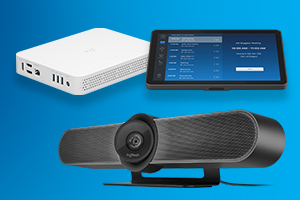Logitech empowers your employees with the right workspace solutions
Today, it’s plain to see that the process of workplace modernization has changed, and with good reason – the very concept of the workplace has...
2 min read
![]() Zones
:
Jun 23, 2021 5:00:00 AM
Zones
:
Jun 23, 2021 5:00:00 AM

Historically, IT decision-makers have always been highly aware of the need for workplace modernization. In every line of work, people demand access to modern technology that will help them thrive. But in the last year or two, the conversation has transformed dramatically. It’s no longer just about putting the best possible technology in the physical workplace – now, people want the agility and flexibility to work everywhere, in every way, all the time.
This is perhaps especially true in healthcare, as the entire ecosystem of providers has been under enormous pressure lately to meet a high level of patient demand. New high-tech ideas like telehealth have been especially pertinent of late, as they make it easier for providers to deliver essential and personalized patient care. With high-quality video and audio as a starting point, healthcare organizations can begin to implement telehealth strategies that are built to last, both now and in a future post-pandemic world.
When it comes to implementing a telehealth strategy, the first step is to maintain continuity where possible. Ask yourself – what about our current process can simply stay the same? There may be some tech tools, or some methods of conducting meetings with patients and staff members, that can stay the same. There may be others that can remain similar but with updated technology, such as refreshed headsets, webcams, or video collaboration solutions.
In other cases, though, it may be time to do some overhauling. For example, in situations where it’s time to do away with in-person consultations and deliver personalized care remotely, you may have to ensure that all rooms are fully video-enabled and thus ready for patients to connect with staff virtually. This may require a combination of plug and play webcams, video collaboration platforms, and other gear such as tablet keyboards, headsets, and more.
In addition to whatever technology your organization deploys now, you should also be prepared to innovate further in the future. New technologies for communication and collaboration are constantly being developed, which means that best practices are always evolving. If you stay ready to adapt, your organization will be well positioned to deliver care in a way that continually meets the demands of both patients and staff members.
For a little help getting up and running with telehealth solutions, you can turn to Logitech and Zones. Logitech offers a wide range of wireless communication tools that are designed to boost user performance, optimize space utility, and help your people truly thrive – and in Zones, you’ll have a team of IT experts at your disposal who can help you get up and running in no time. Connect with us today to learn more about how Logitech and Zones can transform your approach to telehealth.

Today, it’s plain to see that the process of workplace modernization has changed, and with good reason – the very concept of the workplace has...

In recent years, we’ve watched as organizations everywhere have taken their workplace modernization plans and tailored them around an entirely new...

1 min read
Over the last three years, as the business world has adjusted on the fly to a global pandemic, IT leaders have changed their approach in a number of...